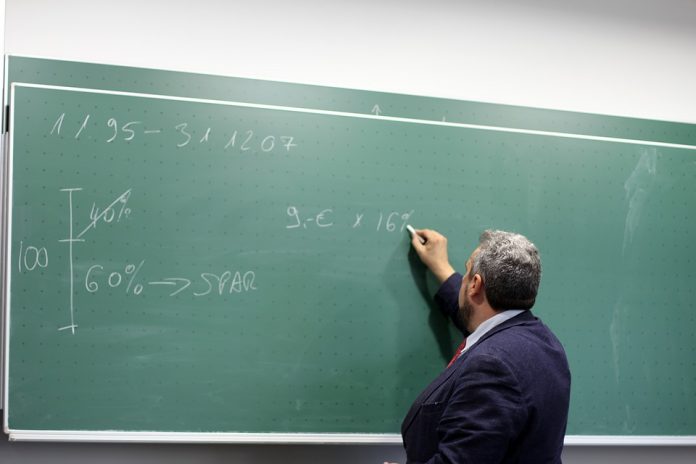“This plan was thoughtfully considered and thoughtfully executed,” Gulley said. “We’ve had a lot of community support.”
Jay Schools, which serves about 1,100 students, would be the second district in Indiana to adopt a policy to arm teachers.
Many states have moved to improve school security after a former student stormed into Marjory Stoneman Douglas High School in Parkland, Fla., on Feb. 14 and shot 17 people to death.
Indiana is among a handful of states that allows school districts to choose to arm teachers, with Wyoming, Georgia, Ohio, Florida and Texas, said Adam Skaggs, the chief counsel for the Giffords Law Center to Prevent Gun Violence, which opposed arming teachers.
“We all agree we want schools to be safer,” Skaggs said. “But, if armed security is necessary, it should be professionally trained [specialists] and sworn law enforcement officers. Arming school personnel, not law enforcement officers, is misguided and dangerous.”
Gulley, an active duty National Guardsman, said he hears the criticism but believes his plan will make school safer for students because it will reduce response time in an active shooter situation.
“The response time is the critical gap that no one wants to talk about,” Gulley said. “Ask your local sheriff or police chief how long it would take them to get to the school in an active shooter situation, and watch their face. It will tell you everything you need to know.”
The plan for Jay Schools is to keep the guns in “discreetly placed” biometric safes in each school building. An undisclosed number of teachers, administrators and staff will be able to access those safes. Those school employees will be trained, Gulley said.
Forty-eight school employees volunteered to be trained and went through a process similar to that of new police officers, Gulley said. They were interviewed by Gulley and local law enforcement officers, given psychological and drug screenings and underwent 27 hours of training in firearms, first aid, active shooter scenarios and tactical training in a school environment.
The Armed Response Staff Members had to pass the same handgun qualification test required of all Indiana police officers, with a score of 90 percent. The standard for police officers is 80 percent, Gulley said.
Those who can carry at schools must undergo quarterly training and recertify every year, he added.
This is one of multiple security measures Gulley has implemented this year.
“This was the 9/11 moment for me,” Gulley said. “We all watched 9/11 happen, and then we saw things change at the airports. Schools never made the 9/11 leap. We protect hospitals, airports, government buildings and professional sports venues with armed security, while most schools are defenseless.”
Jay Schools has spent roughly $900,000 to physically secure its buildings. It has remodeled buildings to create single entry points, replaced classroom doors with ballistic material, placed ballistic film over windows and installed an active shooter mass communication response system that connects to law enforcement. The district plans to install live cameras that will integrate with police, door sensors and perimeter fencing.
The district has also partnered with mental health agencies to bring counselors into its elementary school. A nationwide nonprofit organization, the Sandy Hook Promise, helped the district create a threat assessment team to identify potential violence.
“I’m responsible for these kids,” Gulley said. “I, personally, take that very seriously. I have three kids of my own in this district. School security is a complex problem, and there’s no single answer.
“But, if everything else fails, as a parent, you want someone in the school to protect your kid.”






